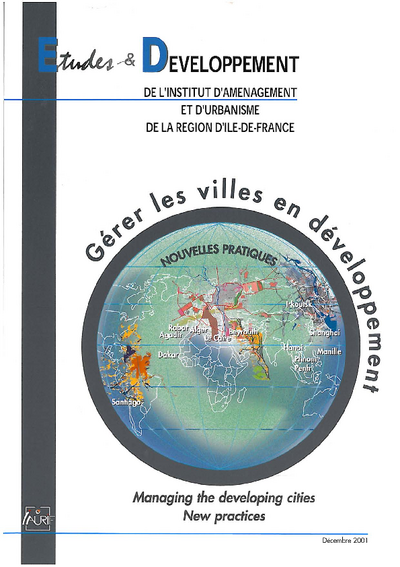Managing the developing cities
Since 1975, the number of cities with populations of over 10 million has grown from 4 to 25, essentially in developing countries.
The fundamental issue of urban governance
About forty major metropolises constitute major relays for the world economy, while the other large cities are dependent either on these metropolises, or on the States in which they are located.
Some have suggested an economic ranking in reaction to a “quantitative” approach to large cities. Others have attempted to formulate an “urban GDP” which significantly changes the review of the major metropolises by repositioning those of the third world, which are more populated but less productive of wealth.
Today, there is also the recognition that numerous major cities in the world are experiencing an exponential development exceeding the administrative boundaries of their theoretical urban governance. And the more the city becomes “metropolised”, the larger its area becomes, and the more it is fragmented between local authorities.
A major comeback of development strategies
And yet, managing the urban space still constitutes a key point in the concrete practices of governance.
The IAU île-de-France will present there several actions of various scale. In the process of redevelopment on what is probably currently a unique scale, Shanghai asked us for an intermediate assessment of the implementation of its development plan.
A test region for the new urban development plans decided by the Chilean government, Santiago was able to benefit from technical and methodological guidance throughout the implementation of a document that it wished, from the outset, to fit into a sustainable development outlook.
Besides the future project in the metropolitan area of Agadir (Morocco), two quite representative cases are given in this work concerning the Lebanon, where we worked on the state of the environment of the coast, and on the programme for economic and social rehabilitation in the south of the country.
In addition to environment concerns, questions about transport continue to be the subject of recurrent requests. They are sometimes part of a process under way for twenty years, such as when Cairo launched a feasibility survey for its third Underground line, and sometimes part of a new overall approach, such as when the Lebanese government requested the development of a transport plan for Geater Beirut. They may also arise from sometimes lively debates occurring locally with the prospect of a specific project, such as a new station or a bridge. We will thus see in this work how the future of the Long Bien bridge in Hanoi or the project for a third bridge in Irkutsk have brought to light diverging conceptions of the future of transport in the two cities in question.
The tools that will enable the metropolises to monitor their development and correct their policies
Encouraged by technological advances, and by better training of local executives, an increasing number of metropolises are equipping themselves with management tools. A logical consequence of this is the increasing trend for urban or regional development agencies to be set up.
The urban agencies put in place in Morocco are thus a particularly innovative initiative, and, for six years now, IAU île de France have been developing there a fruitful programme of technical assistance and training for teams from Rabat-Salé and Agadir so as to enable them to respond to requests that are increasingly diversified. On another scale in Senegal, an interesting project for a regional development agency is being put in place in the Region of Dakar, and this initiative is now also considered by the Ivory Coast. The context is sometimes more strictly urban, and the example of the Bureau of Urban Affairs established by the authorities of Phnom Penh with the backing of the French Co-operation and of the European Union, led us to ask APUR to tell us about its long assignment on site.
Remote sensing using the SPOT Earth observation satellite programme rapidly enabled the Manila authorities to determine the issues of land use cover in their metropolis, prior to launching a development strategy. But the challenge also lies in developing partnerships between local players, and Morocco has plenty of experience of this.
The approach to urban development in metropolises today is tending to become more flexible, more pragmatic, and closer to local initiatives. The resulting documents and projects are perhaps less spectacular, but their conception and their management will make them more reactive and doubtless more effective.
This study is linked to the following themes :
International |
Governance
